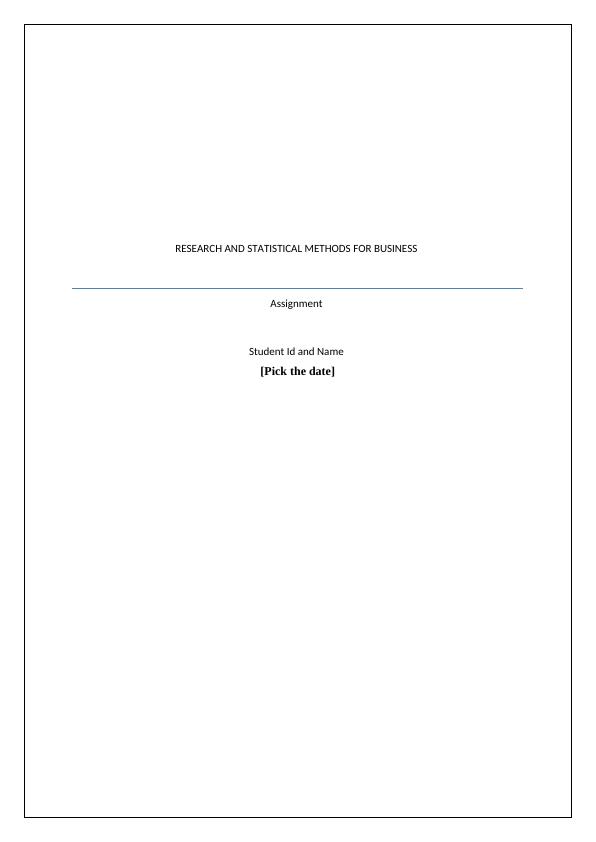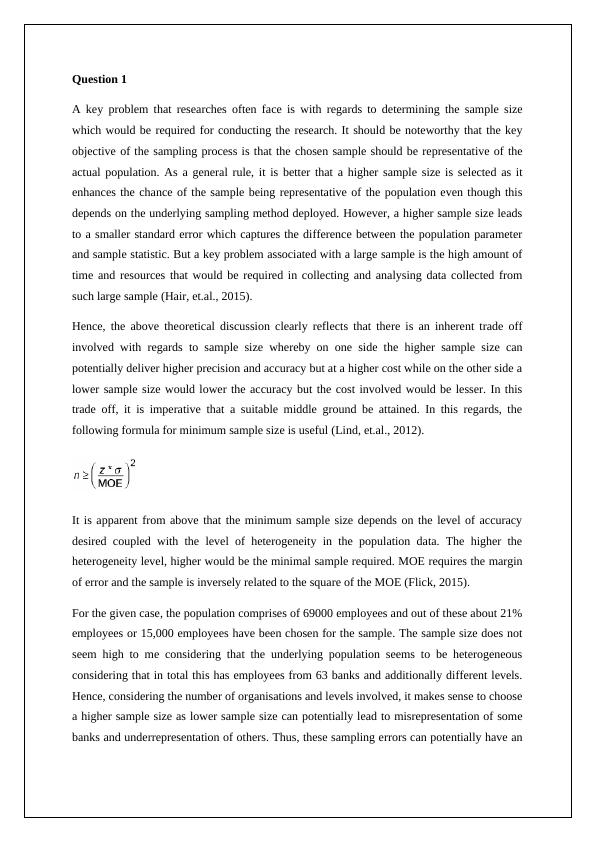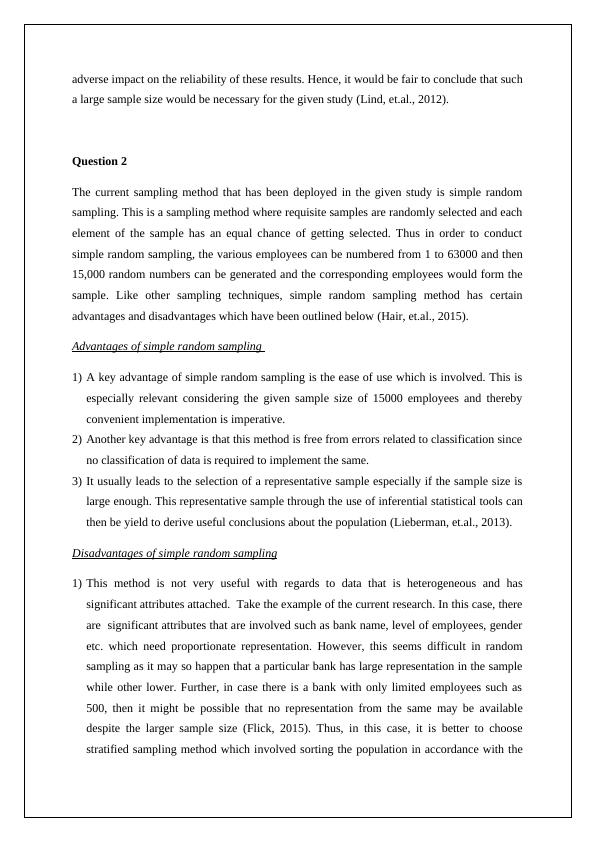Research and Statistical Methods for Business Assignment
Investigation of the association between employee's perception of quantitative and qualitative job insecurity with job satisfaction and psychological distress in the Belgium banking sector.
9 Pages2465 Words405 Views
Added on 2023-06-13
About This Document
This assignment discusses the key problem that researchers often face with regards to determining the sample size which would be required for conducting the research. It also discusses the current sampling method that has been deployed in the given study and the reliability and validity of the given variables.
Research and Statistical Methods for Business Assignment
Investigation of the association between employee's perception of quantitative and qualitative job insecurity with job satisfaction and psychological distress in the Belgium banking sector.
Added on 2023-06-13
ShareRelated Documents
End of preview
Want to access all the pages? Upload your documents or become a member.
Assignment | research and Statistical Method
|8
|2380
|17
Research and Statistical Method: Assignment
|8
|2402
|28
Determining Sample Size and Sampling Method in Research
|8
|2422
|284
Research and Statistical Method - PDF
|8
|2295
|85
Research and Statistical Method: Sample Size, Sampling Method, Reliability, Control Variables, and Research Design
|5
|753
|221
Business Decision Making: Analysis of Random Samples for Supermarket Chain
|10
|492
|239



